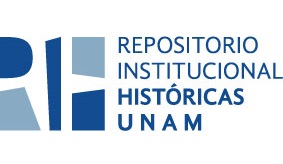Consulte el registro sencillo del ítem
The Questionnaire of the Cortes of Cádiz: notes and Reflections on the Ethnographic Potential of its Responses
| dc.contributor.author | Quiñones Martínez, Cynthia Teresa |
| dc.contributor.author | Gatta, Massimo |
| dc.date.accessioned | 2025-04-02T20:41:54Z |
| dc.date.available | 2025-04-02T20:41:54Z |
| dc.date.issued | 2024 |
| dc.identifier.issn | 2448-6922 |
| dc.identifier.uri | http://hdl.handle.net/20.500.12525/6262 |
| dc.description.abstract | This article aims to spark academic interest in exploring and analyzing the responses to the questionnaire issued by the Cortes of Cádiz in 1812. This questionnaire was designed to collect detailed information about the lives, customs, and traditions of the indigenous people in overseas colonies. To this end, a historiographical balance is presented that brings into dialogue the works carried out on the questionnaire, as well as an exposition of the geographical and cultural distribution of the responses found and their potential for the construction of ethnographies of American peoples at the end of the Colonial period. Emphasizing the significance of examining the corpus of responses to this questionnaire, the article underscores its role in understanding the ethnic and cultural diversity of Spanish America at the beginning of the nineteenth century, within the context of the Gaditan constitutional project. One of the key conclusions reached, based on a comprehensive review of the 58 responses identified so far, highlights the enduring nature of ethnic and cultural diversity in Spanish America during the twilight of the colonial era. |
| dc.description.abstract | Este artículo pretende despertar el interés académico por explorar y analizar las respuestas al cuestionario emitido por las Cortes de Cádiz en 1812. Este cuestionario fue diseñado para recopilar información detallada sobre las vidas, costumbres y tradiciones de los indígenas en las colonias de ultramar. Para ello, se presenta un balance historiográfico que pone en diálogo los trabajos realizados sobre el cuestionario, así como una exposición de la distribución geográfica y cultural de las respuestas encontradas y su potencial para la construcción de etnografías de los pueblos americanos al final del período colonial. Enfatizando la importancia de examinar el corpus de respuestas a este cuestionario, el artículo subraya su papel en la comprensión de la diversidad étnica y cultural de Hispanoamérica a principios del siglo XIX, en el contexto del proyecto constitucional gaditano. Una de las conclusiones clave alcanzadas, basada en una revisión exhaustiva de las 58 respuestas identificadas hasta el momento, destaca la naturaleza perdurable de la diversidad étnica y cultural en Hispanoamérica durante el ocaso de la era colonial |
| dc.format | |
| dc.format.extent | p. 179-220 |
| dc.language.iso | spa |
| dc.publisher | Universidad Nacional Autónoma de México. Instituto de Investigaciones Históricas |
| dc.relation | Quiñones Martínez, Cynthia Teresa y Massimo Gatta . "The Questionnaire of the Cortes of Cádiz: notes and Reflections on the Ethnographic Potential of its Responses". Estudios de Historia Novohispana, 71 (2024) (2024): 179-220. Edición digital en PDF. Disponible en https://doi.org/10.22201/iih.24486922e.2024.71.77822, Disponible en Repositorio Institucional Históricas-UNAM, http://hdl.handle.net/20.500.12525/6262 |
| dc.relation.ispartof | https://novohispana.historicas.unam.mx/index.php/ehn/issue/view/5819 |
| dc.rights.uri | http://creativecommons.org/licenses/by-nc-sa/4.0 |
| dc.source | Estudios de Historia Novohispana 71 (2024) (2024).https://novohispana.historicas.unam.mx/index.php/ehn/issue/view/5819 |
| dc.title | The Questionnaire of the Cortes of Cádiz: notes and Reflections on the Ethnographic Potential of its Responses |
| dc.type | Artículo |
| dcterms.bibliographicCitation | Quiñones Martínez, Cynthia Teresa y Massimo Gatta . "The Questionnaire of the Cortes of Cádiz: notes and Reflections on the Ethnographic Potential of its Responses". Estudios de Historia Novohispana, 71 (2024) (2024): 179-220. Edición digital en PDF. Disponible en https://doi.org/10.22201/iih.24486922e.2024.71.77822, Disponible en Repositorio Institucional Históricas-UNAM, http://hdl.handle.net/20.500.12525/6262 |
| dc.rights.holder | La titularidad de los derechos patrimoniales de esta obra pertenecen a: Universidad Nacional Autónoma de México. Instituto de Investigaciones Históricas. Su uso se rige por una licencia CC-BY-NC-SA 4.0 Internacional http://creativecommons.org/licenses/by-nc-sa/4.0/legalcode.es, fecha de asignación de la licencia 2024, para un uso diferente consultar al correo:novohispana@unam.mx |
| dc.coverage.placeofpublication | México |
| dc.relation.number | 71 (2024) |
| dc.type.publicationversion | publishedVersion |
| dc.audience | students |
| dc.audience | researchers |
| dc.audience | teachers |
| dc.rights.access | openAccess |
| dc.relation.alternativeidentifier | https://doi.org/10.22201/iih.24486922e.2024.71.77822 |
| dc.identifier.url | https://doi.org/10.22201/iih.24486922e.2024.71.77822 |
Ficheros en el ítem
| Ficheros | Tamaño | Formato | Ver |
|---|---|---|---|
|
No hay ficheros asociados a este ítem. |
|||
Este ítem aparece en la(s) siguiente(s) colección(ones)
Excepto si se señala otra cosa, la licencia del ítem se describe como http://creativecommons.org/licenses/by-nc-sa/4.0



